Search Images
Browse Content (p. 1226)
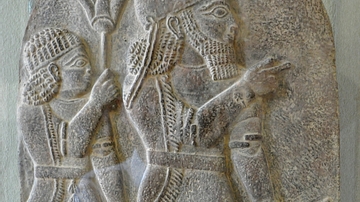
Image
Prince Kilamuwa
This basal stele depicts prince Kilamuwa accompanied by a servant. Circa 830 BCE. Found at one of the halls of a building at the citadel of Sam'al/Zincirli, modern-day Southern Turkey. (Pergamon Museum, Berlin)
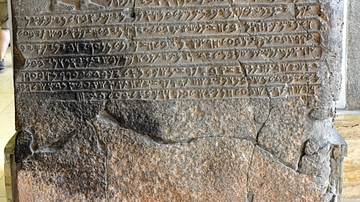
Image
Stele of Prince Kilamuwa from Sam'al
This basalt stele was inscribed with Phoenician language. The upper part of the stele depicts Kilamuwa praying in front of symbols of deities. Circa 825 BCE. From one of palaces at the citadel of Sam'al/Zincirli, modern-day Southern Turkey...
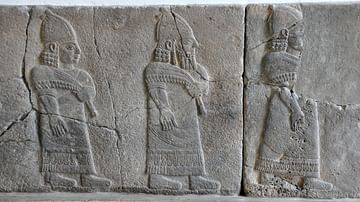
Image
Court Officials from Sam'al
This basalt wall relief depicts a procession of court officials. 8th century BCE. From the citadel of Zincirli/Sam'al, modern-day Southern Turkey. (Pergamon Museum, Berlin)
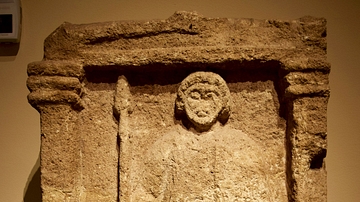
Image
Gravestone of a Warrior, Black Sea
A memorial carved from limestone of an ancient Black Sea warrior with his spear and shield. The Bosphorus region of present-day Turkey, c. 125-50 BCE. (Pushkin Museum, Moscow.)
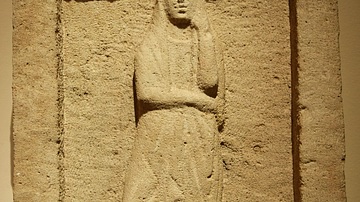
Image
Gravestone of Greek Woman from Black Sea
Limestone grave-stela of a Greek woman from the Black Sea. Cape Tuzla (Taman, Russia), c. 100 BCE-100 CE. (Pushkin Museum, Moscow)
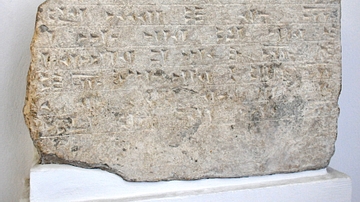
Image
Inscription of the Urartian King Sarduri II
The cuneiform inscription on this block mentions king Sarduri II, son of the king Argishti I. Sarduri II was a King of Urartu and was succeeded by his son, Rusa I. From Astwadzashen, 50 kilometers southeast of Van (of eastern Turkey). c...
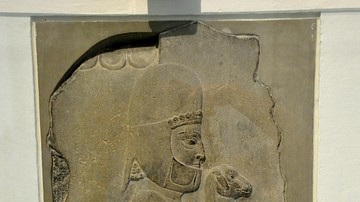
Image
Gift-bearer Holding a Lamb from Persepolis
This limestone wall relief shows a Mede man holding a gift, which appears to be a lamb, for the king. The event is probably the Persian New Year (Newroz). From Persepolis, the stairway of the Palace of Xerxes I (485-465 BCE), modern-day Iran...
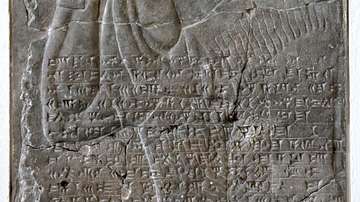
Image
Tribute Bearer from Nimrud
This alabaster bas-relief is part of a larger one depicting a sequence of tribute bearers. Here, this man shows a gesture of submission, reflected by his raised arms. The "Standard Inscription" of Ashurnasirpal II appears on the lower half...
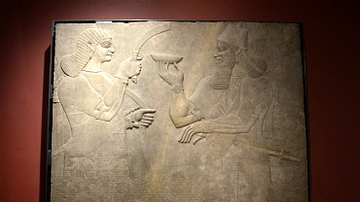
Image
Ashurnasirpal II in a Ritual Scene
This alabaster bas-relief was donated by Sir James Young (a pioneer in Gynecology and Obstetrics and former president of the Royal College of Physicians of Edinburgh) to the Society of Antiquities in Scotland in 1865 CE. The panel depicts...
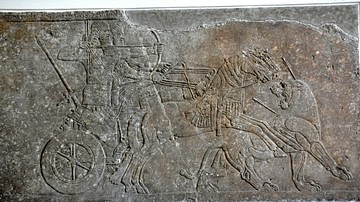
Image
Ashurnasirpal II Lion Hunting
Gypsum wall relief depicting a classical Assyrian lion-hunting scene. The striking feature is that the king wears a diadem with a rosette on it, instead of the typical conical headcap of the Assyrian kings. From the North-West Palace at Nimrud...